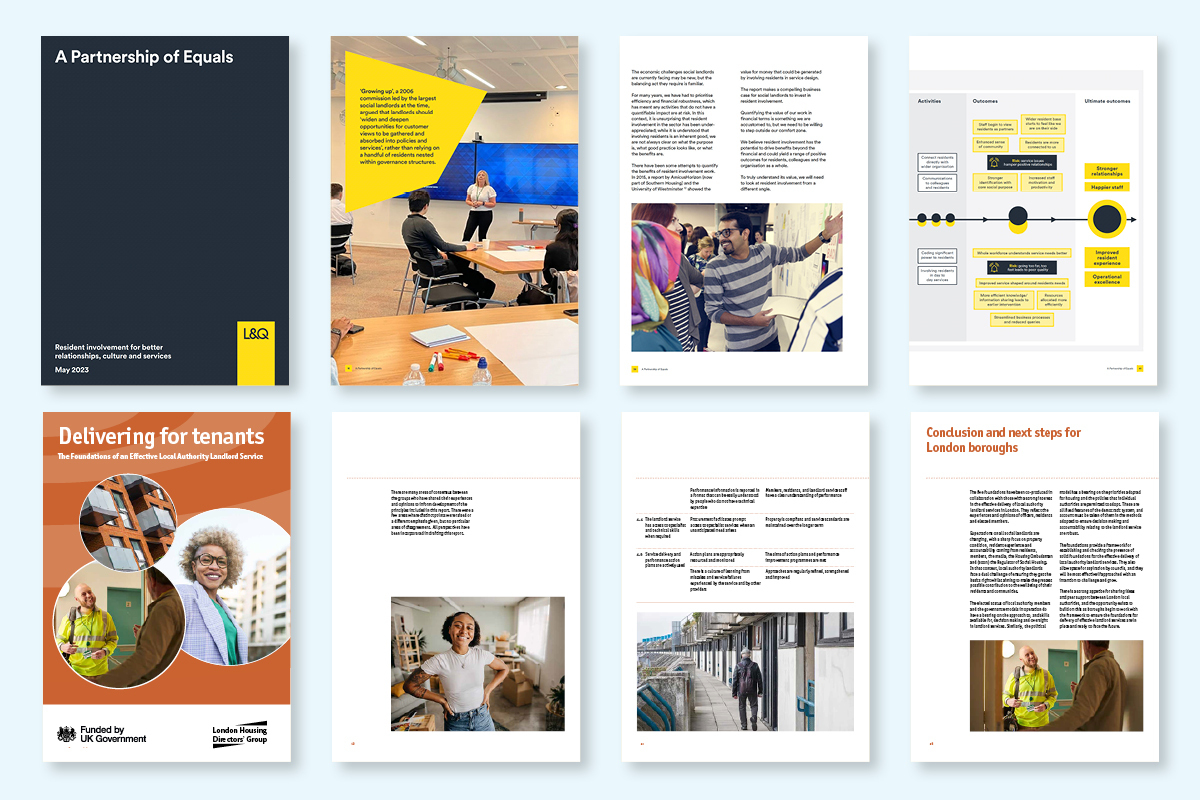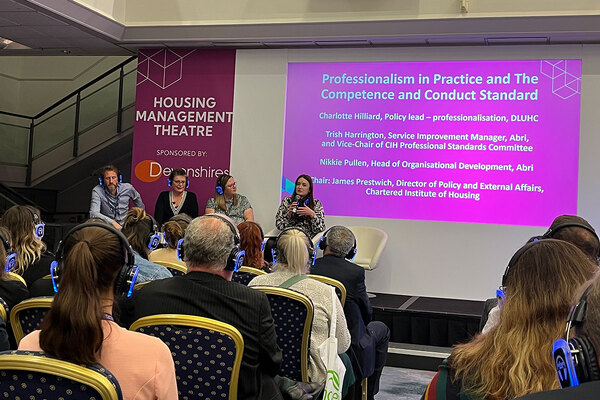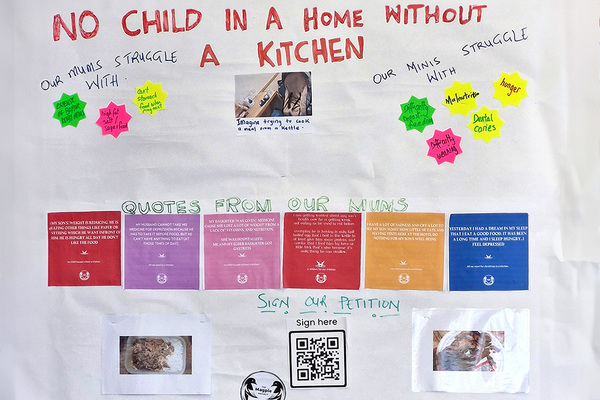You are viewing 1 of your 1 free articles
The Thinkhouse Review: what should an effective social landlord look like?
A blueprint for the future of social housing and the principles of effective council housing are laid out in the two most eye-catching reports among the latest housing research. Kerri Farnsworth runs through them in this month’s Thinkhouse Review
There were nine high-quality submissions made to the Thinkhouse editorial panel for review. As ever, they were on a wide range of topics, from rental market considerations, to placemaking and homelessness services.
The experience of the rental market from the tenant’s perspective was a popular topic, so for this month’s Thinkhouse Review, I’m going to take a more detailed look at two submissions on this. Both of which were focused on how landlords can improve engagement and services to their tenants – albeit one from the social housing sector and the other from the local authority sector.
The A Partnership of Equals: resident involvement for better relationships, culture and services report by social housing sector leader L&Q is the outcome of a series of papers, including a Theory of Change. It was developed through qualitative interviews, focus groups and workshops with residents to discuss the context, purpose and desired outcomes of their involvement in developing services and operational culture within the company’s senior management.
L&Q utilised its existing resident services board membership, plus an online survey of around 3,000 of its residents.
The housing association also undertook extensive desktop research of resident engagement practices within its peers in the social housing sector, along with direct interviews, which were then discussed further with L&Q residents in the focus groups and workshops.
The executive summary of the document sets out nine key principles to guide resident involvement going forward. The report makes it clear that adherence to proposed regulatory reform will not be sufficient and that the sector cannot resolve all tenants’ complex problems in a world that often feels uncertain and rapidly changing.
Social sector landlords have a key influencing role in ensuring that their homes remain the “sanctuary” that their residents want and need – but they have a long way to go in rebuilding trust, accountability and transparency with their tenants, especially for the long term. The report acknowledges that this is challenging and that landlords must take themselves out of their comfort zones in ceding more power to residents.
“In many ways I couldn’t help think that it was a shame that these two reports look to have been developed simultaneously, but in apparent isolation or without cross-reference”
It also states that “landlords must not be afraid to fail”.
L&Q says it reframed resident involvement as ‘volunteering’ to make it more valued. It also gave their volunteers agreements setting out clear roles and responsibilities, as well as what they could influence and what they could not influence. This included investing in a ‘volunteer toolkit’ and an ambition to meet the National Council for Voluntary Organisations’ Investing in Volunteers standard.
L&Q also set out how it will measure progress on its resident involvement practices, which it hopes will provide a blueprint for the sector. Certainly, L&Q’s report sets out a bold and intriguing new approach to fostering tenant-focused civic engagement, and it will be fascinating to see how this pans out over the long term.
The second report is a Local Government Association-supported ‘pause and reflect’ thinkpiece on behalf of the London Housing Directors’ Group, which collectively lets 390,000 social rented homes and provides services to 410,000 leaseholders.
Delivering for tenants: the foundations of an effective local authority landlord service looks at the key principles needed to provide a high-quality local authority landlord service and contribute towards wider council objectives. These are based on five foundations: vision and strategy, leadership, management, performance and compliance, and assurance on which service development and delivery could be based.
The foundations were developed collectively through workshops, focus groups, surveys and interviews with tenants, councillors and officers at all levels, plus interviews with key stakeholders such as the Housing Ombudsman, Regulator of Social Housing and London Tenants Federation.
Within each foundation, a series of principles are detailed in terms of actions, practices and anticipated outcomes. A selection of real-life examples help illustrate how the principles can be applied in practice, too. While there are no great revelations in this report, it does what it says on the tin well – clearly setting out a user-friendly guiding framework for local authorities to use to help develop, monitor and evaluate housing services.
In many ways, I couldn’t help think that it was a shame that these two reports look to have been developed simultaneously, but in apparent isolation or without cross-reference. Collectively, the two authors could have pooled their resources and experiences to test and develop a fully-rounded, pan-public sector approach to providing high-quality landlord services and the role of their tenants in co-creating, guiding and evaluating those services.
In a time of such uncertainty and stress for public sector bodies and their residents, the more we can work as a collective sector, the better.
Kerri Farnsworth, consultant; and member, Thinkhouse editorial panel
Sign up for the IH long read bulletin
Already have an account? Click here to manage your newsletters













